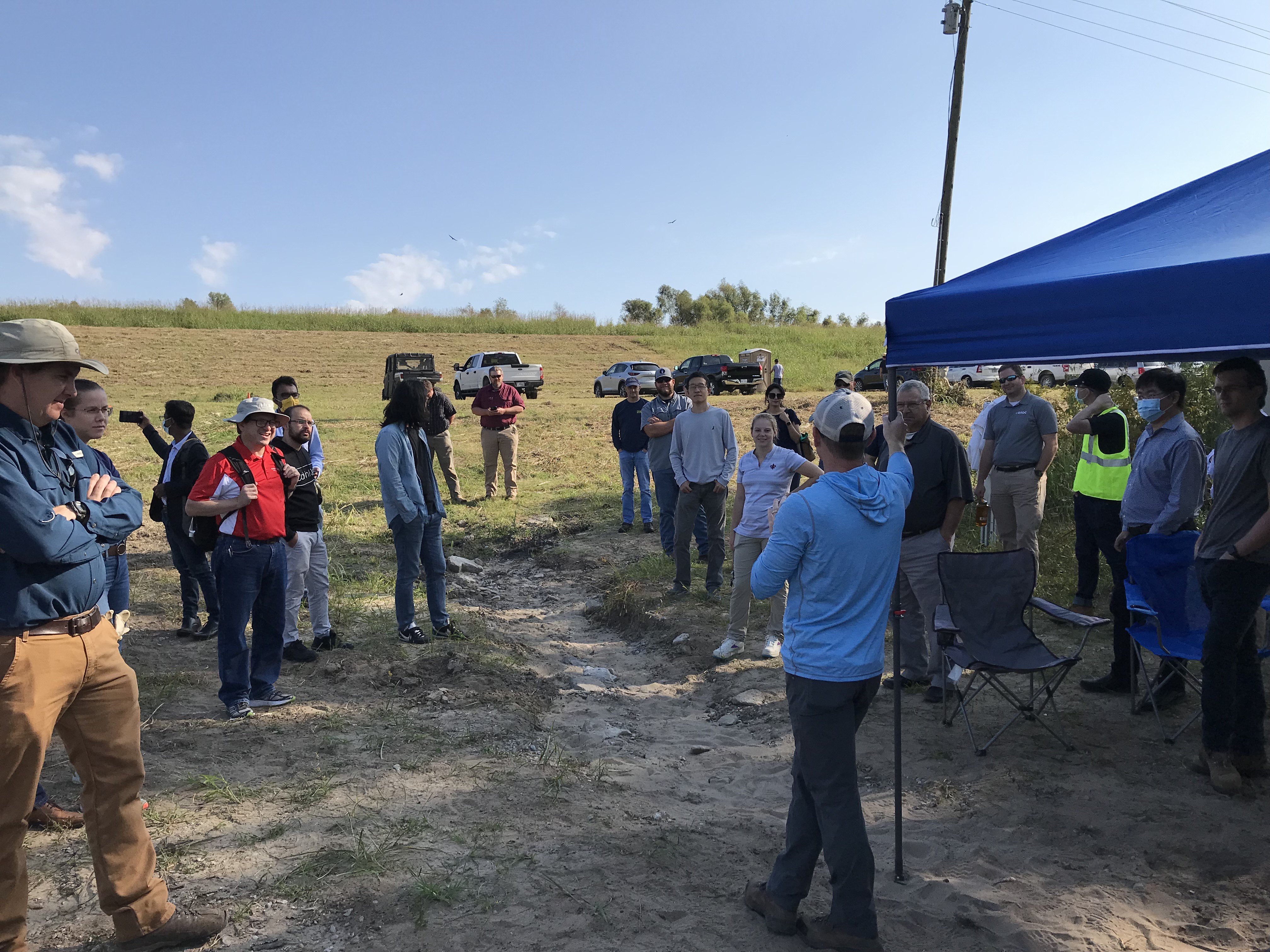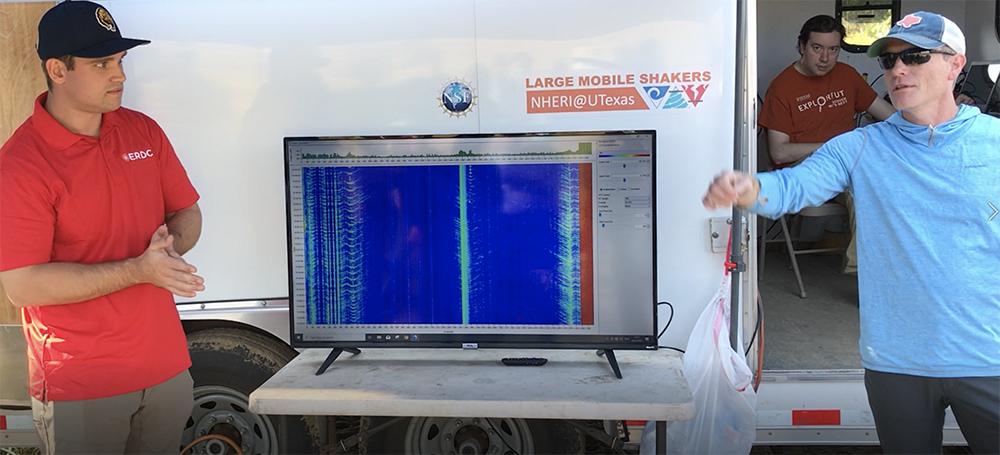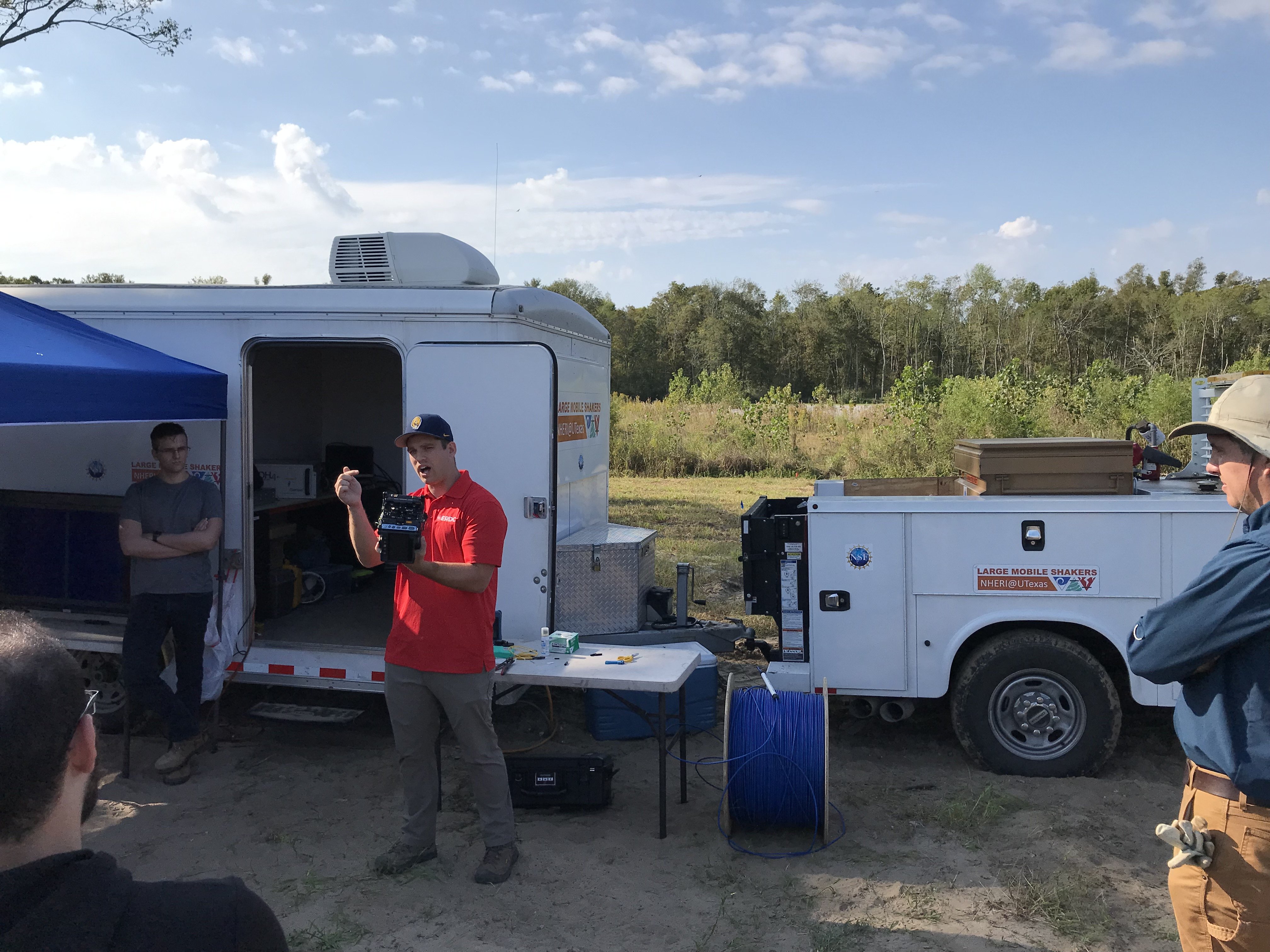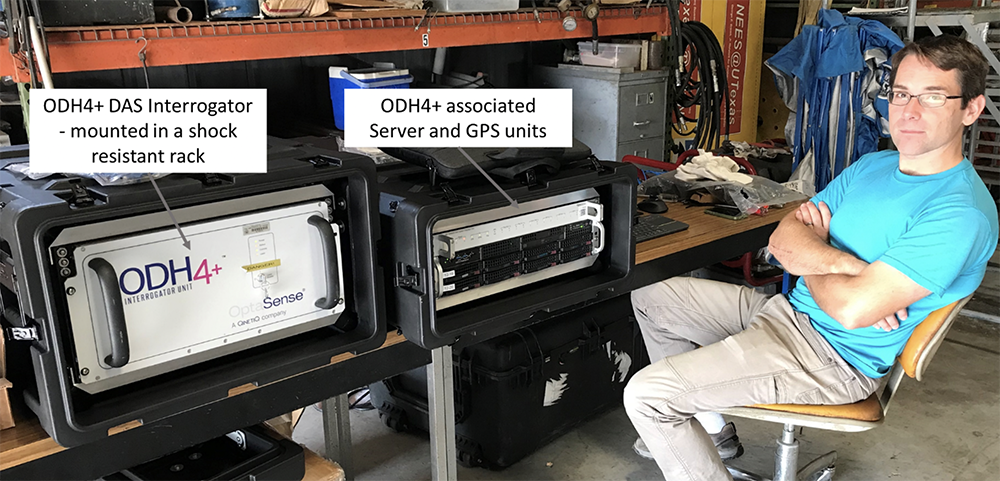Fiber Optic Sensing Now Available from NHERI@Texas
Recent deployment helps the Army Corps of Engineers monitor performance of Blackhawk levee
Published on January 4, 2022

The NHERI@UTexas team demonstrated its new DAS system at the toe of the Blackhawk levee along the Mississippi River in Louisiana.
The NHERI at University of Texas Mobile Shaker experimental facility has acquired a new fiber-optic sensing system called distributed acoustic sensing, or DAS, to perform efficient, low-cost subsurface and structural sensing. Using laser light pulses to detect sounds and vibrations, DAS technology converts a standard fiber optic cable into a line of highly sensitive acoustic and vibration sensors making it an ideal and inexpensive tool for monitoring infrastructure and subsurface imaging.
At its October 2021 user workshop, the NHERI@UTexas team provided a field demonstration of the DAS system on a section of repaired levee along the Mississippi River near Blackhawk, Louisiana. The event was held in conjunction with the University of California, Berkeley, the U.S. Army Corps of Engineers (USACE), and the Engineer Research and Development Center (ERDC).
On the first day of the workshop, held at the Louisiana State University Center for River Studies, prospective users were introduced to the NHERI@UTexas facility and the DAS technology. (Videos of the days presentations are available on the NHERI@UTexas website.)
On the second day, workshop attendees traveled to Black Hawk, Louisiana, where approximately 2 km of fiber optic cable had been installed in both surface and borehole arrays on a section of the levee. This section of levee is of particular interest to the USACE because severe seepage was detected during a flood event in 2015. A sand boil on the landward side of the levee prompted an emergency retrofit. The USACE stopped the flow through the sand boil by placing a line of deep relief wells along the landward toe of the levee and covering the surface expression with a gravel pad.
The goal of this DAS deployment was to image the levee at high spatial resolution and monitor potential seepage through changes of subsoil stiffness from both active and passive surface wave measurements. The preliminary study during the workshop demonstrated that DAS is an effective system for active surface wave measurements using the Thumper mobile shaker as a source. Data collected from field demonstration of the workshop are published on the DesignSafe Data Depot. Passive surface wave measurements using the DAS system will be conducted by ERDC to continuously monitor the subsoil stiffness in the levee.

When the mobile shakers vibrate the ground, real-time data streams in from the fiber optic sensors. Brady Cox from the NHERI@UTexas facility (right) and Peter Hubbard from UC Berkeley (left) took part in the demonstration.
How DAS works. The DAS system uses an interrogator unit to send laser light along the cable, thousands of pulses of light per second. A small proportion of that light is reflected back by the process known as Rayleigh Backscatter. Vibrations from the surrounding environment strain the fiber optic cable which change the travel time of the laser light. Using mathematical algorithms, the DAS interrogator observes and interprets the returning light patterns to determine the dynamic strain along the fiber optic cable. In summary, the Rayleigh scattering-based DAS system uses fiber optic cables to provide distributed strain sensing. By using the optical cable as the sensor, DAS can provide a large amount distributed sensing data at a much lower cost than the traditional geophones-accelerometer array.
The new OptaSense ODH4+ DAS Interrogator available at NHERI@UTexas is capable of measuring with any type of fiber (single mode, multi-mode or enhanced high backscatter) with a sample rate up to 100 kHz and selectable gauge length (2m to 32m).
For details about using the NHERI@UTexas DAS system, please contact site operations manager Farnyuh Menq.

Peter Hubbard from UC Berkeley showcasing the splicer used to join two fiber optic cables. To the right, the fiber optic cable used in the DAS demonstration.








